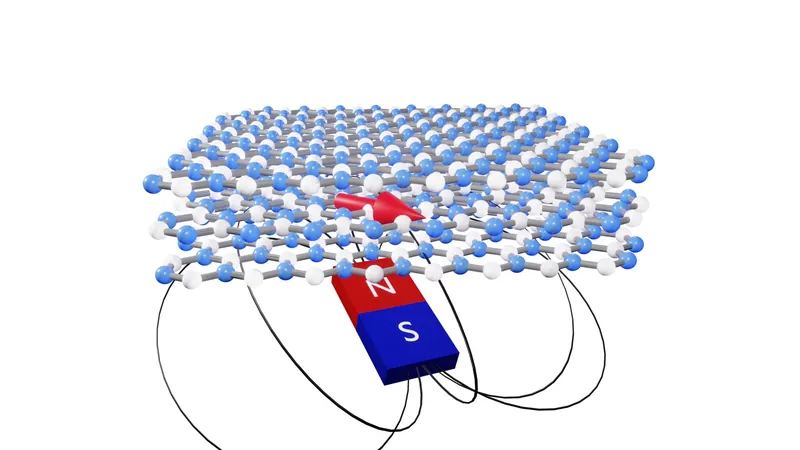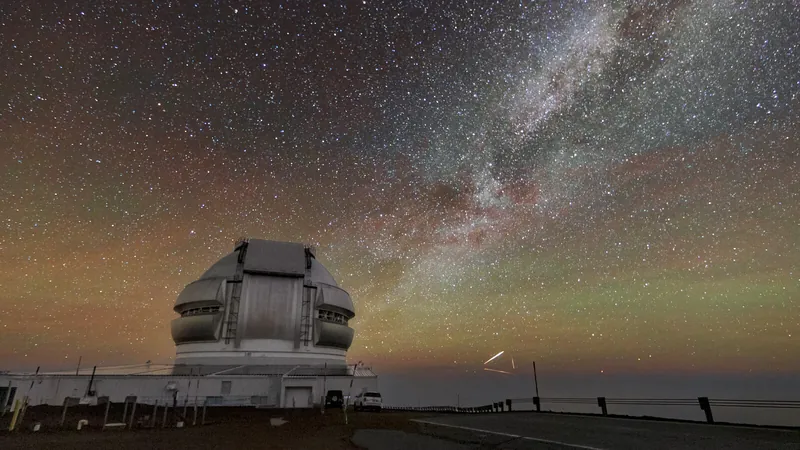
Revolutionary 2D Quantum Sensor Transforms Magnetic Field Detection
2025-05-28
Author: Charlotte
Breakthrough in Quantum Sensing
A new era in quantum sensing has emerged thanks to a groundbreaking team of physicists at the University of Cambridge. They have unlocked the potential of spin defects in hexagonal boron nitride (hBN), creating powerful, room-temperature sensors capable of detecting magnetic fields at the nanoscale. This innovative technology, detailed in Nature Communications, promises to advance practical and versatile quantum technologies in ways we never thought possible.
Elevating Magnetometry to New Heights
Dr. Carmem Gilardoni, a co-first author of the study, expressed the significance of this breakthrough, stating, "Quantum sensors like our hBN technology allow for nanoscale detection of diverse properties, including currents and magnetization, paving the way for groundbreaking discoveries in physics and functionality." Unlike traditional nitrogen vacancy (NV) centers in diamond that operate within certain limitations, the hBN sensor introduces revolutionary multi-axis detection capabilities, showcasing a much larger dynamic range.
Understanding the Science Behind the Magic
The Cambridge team has not only demonstrated the new sensor’s capabilities but also unraveled the science behind its impressive properties. They identified that the unique low symmetry and advantageous excited state optical rates of the hBN defects contribute significantly to its wide dynamic range and vectorial sensing abilities. This discovery could transform how scientists visualize magnetic fields.
The Ideal Material for Quantum Applications
Hexagonal boron nitride, a two-dimensional material akin to graphene, can be thinned down to just a few atomic layers. Its atomic-scale defects uniquely interact with visible light, responding sensitively to local magnetic conditions—ideal for quantum sensing applications.
Pioneering Techniques for Future Research
In their study, the researchers used optically detected magnetic resonance (ODMR) to analyze the response of hBN defect fluorescence to varying magnetic fields. By meticulously tracking spin responses and photon emissions, they unveiled the underlying optical rates linked to the defect symmetry, establishing a robust and versatile magnetic detector.
A Gateway to New Frontiers in Magnetic Research
Dr. Simone Eizagirre Barker, a co-first author, noted, "While ODMR isn't new, our findings illustrate that hBN-based probes can extend the application of this technique into uncharted territories, enhancing our ability to image magnetic phenomena and nanomaterials like never before."
A New Lens on Magnetic Phenomena
Prof. Hannah Stern, a co-leader of the research, emphasized that this sensor could revolutionize the study of magnetic phenomena across new material systems, allowing for higher spatial resolution than ever achieved. The 2D nature of hBN means that the proximity of the sensor to the sample is paramount, potentially enabling atomic-scale magnetic field mapping. Exciting possibilities await just beyond the horizon as this pioneering technology takes center stage in quantum sensing.









 Brasil (PT)
Brasil (PT)
 Canada (EN)
Canada (EN)
 Chile (ES)
Chile (ES)
 Česko (CS)
Česko (CS)
 대한민국 (KO)
대한민국 (KO)
 España (ES)
España (ES)
 France (FR)
France (FR)
 Hong Kong (EN)
Hong Kong (EN)
 Italia (IT)
Italia (IT)
 日本 (JA)
日本 (JA)
 Magyarország (HU)
Magyarország (HU)
 Norge (NO)
Norge (NO)
 Polska (PL)
Polska (PL)
 Schweiz (DE)
Schweiz (DE)
 Singapore (EN)
Singapore (EN)
 Sverige (SV)
Sverige (SV)
 Suomi (FI)
Suomi (FI)
 Türkiye (TR)
Türkiye (TR)
 الإمارات العربية المتحدة (AR)
الإمارات العربية المتحدة (AR)